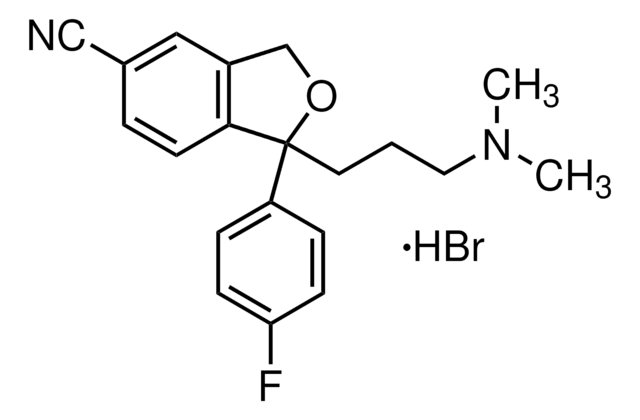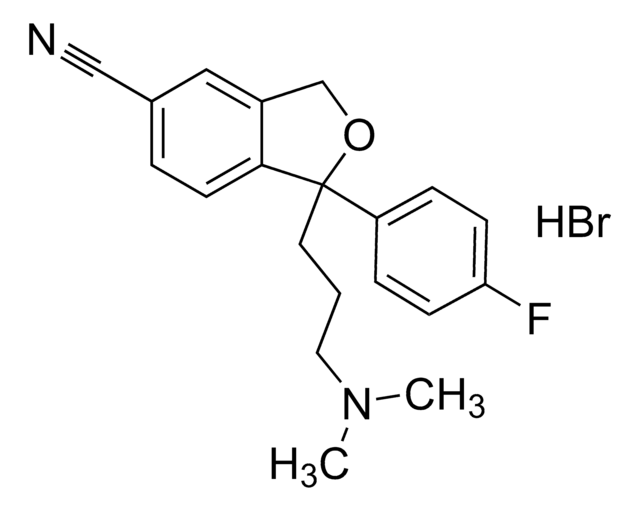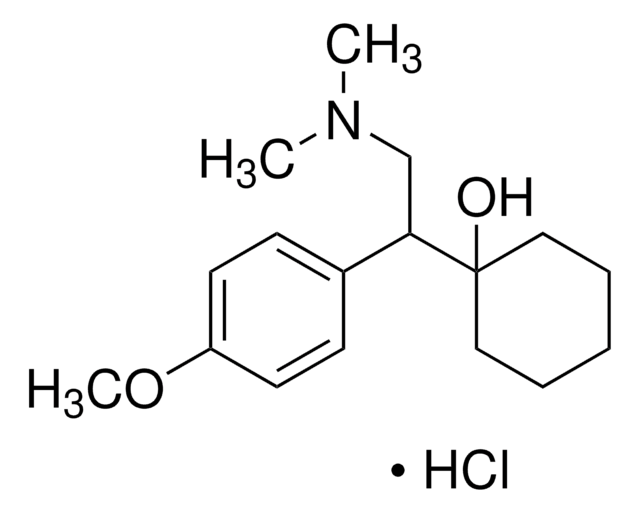Y0001008
Citalopram -hydrobromid
European Pharmacopoeia (EP) Reference Standard
Synonym(e):
1-[3-(Dimethylamino)-propyl]-1-(4-fluorphenyl)-1,3-dihydro-5-isobenzofurancarbonitril -hydrobromid
About This Item
Empfohlene Produkte
Qualität
pharmaceutical primary standard
API-Familie
citalopram
Hersteller/Markenname
EDQM
Anwendung(en)
pharmaceutical (small molecule)
Format
neat
Lagertemp.
2-8°C
SMILES String
Br[H].CN(C)CCCC1(OCc2cc(ccc12)C#N)c3ccc(F)cc3
InChI
1S/C20H21FN2O.BrH/c1-23(2)11-3-10-20(17-5-7-18(21)8-6-17)19-9-4-15(13-22)12-16(19)14-24-20;/h4-9,12H,3,10-11,14H2,1-2H3;1H
InChIKey
WIHMBLDNRMIGDW-UHFFFAOYSA-N
Angaben zum Gen
human ... SLC6A4(6532)
Suchen Sie nach ähnlichen Produkten? Aufrufen Leitfaden zum Produktvergleich
Allgemeine Beschreibung
Anwendung
Biochem./physiol. Wirkung
Verpackung
Sonstige Hinweise
Ähnliches Produkt
Signalwort
Warning
H-Sätze
Gefahreneinstufungen
Acute Tox. 4 Oral - Aquatic Chronic 3 - Repr. 2 - STOT SE 3
Zielorgane
Central nervous system
WGK
WGK 2
Flammpunkt (°F)
Not applicable
Flammpunkt (°C)
Not applicable
Choose from one of the most recent versions:
Analysenzertifikate (COA)
Sorry, we don't have COAs for this product available online at this time.
If you need assistance, please contact Kundensupport
Besitzen Sie dieses Produkt bereits?
In der Dokumentenbibliothek finden Sie die Dokumentation zu den Produkten, die Sie kürzlich erworben haben.
Unser Team von Wissenschaftlern verfügt über Erfahrung in allen Forschungsbereichen einschließlich Life Science, Materialwissenschaften, chemischer Synthese, Chromatographie, Analytik und vielen mehr..
Setzen Sie sich mit dem technischen Dienst in Verbindung.




